Muglib
Tng200 show here:
a) pattern of melting, 4763,
4767, 4780, 4751 and detail
in 4755 , 875, 933, 935,
915,
4770
b) break up of amphibolite to
form diatexite stitch 925-926, show
also 924, DSC00921good
c) folding and melting
885good, DSC00888zoom, 1216
d) final product of melting 1003good
d) preference for antiform and destruction of synform, 4759 needs to be
accompanied by a line drawing, 4779good, IMG_4776zoom, 4784good synform
and melting pushing up, stitched_894, DSC00879good
a) In situ
melting of biotite-amphibolite (all photographs down plunge of fold
axis, or perpendicular to axial plane)

|
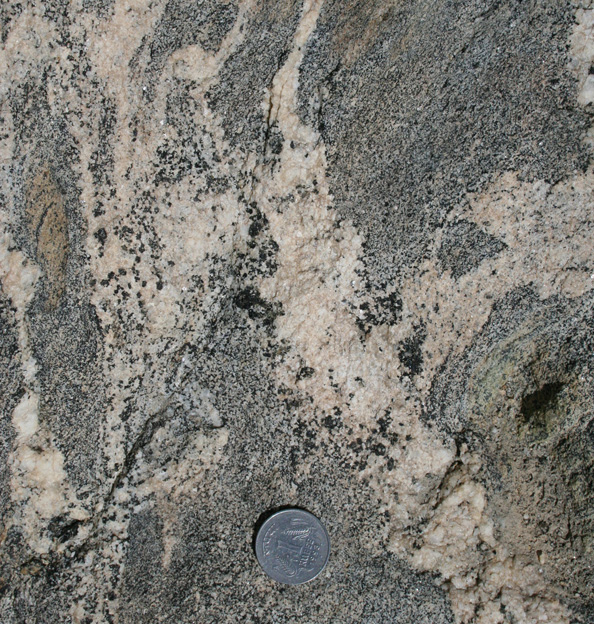
|
| Figure 1a-c. (4763,
4767, 875). In situ melting
of amphibolites forming
diffuse patches of leucocratic rock. Notice the increased size of
hornblende (black granis) in leucosomes. |
|
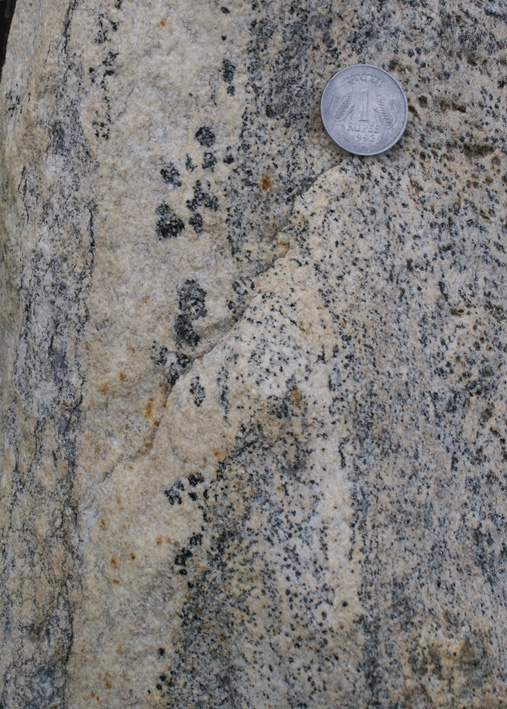
|
| Figure
1c. Leucocratic dykelet linked continuously with leucosome
in
the surrouding banded amphibolite migmatite. Notice the porphyritic,
poikilitic hornblende grains in dykelet (outcrop). |
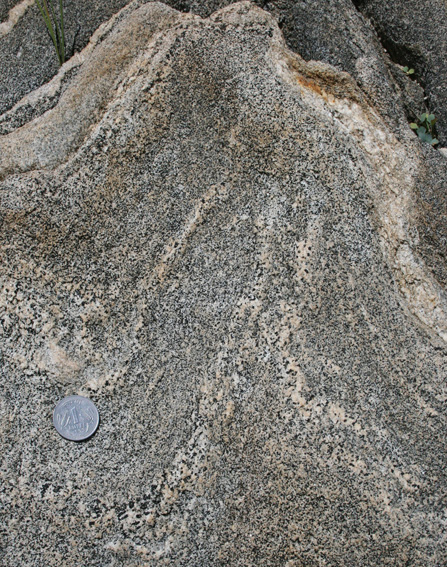
|
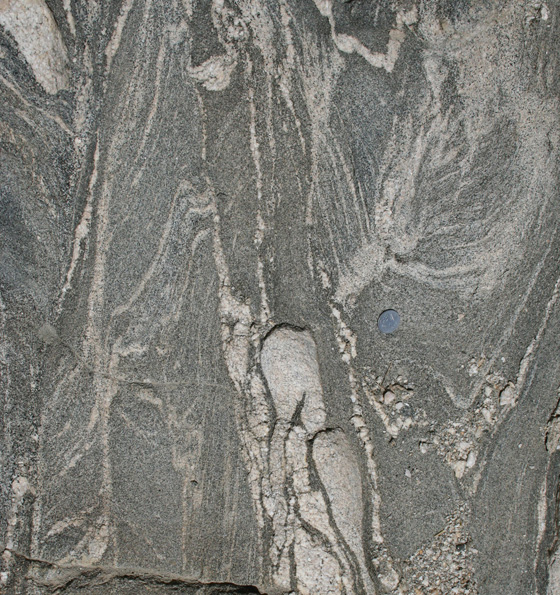
|
| Figure
2a-c. (4780, 4751, 4755) outcrop |
Figure 2b. Folded
amphibolite displaying leucosomes linked directly
with the matrix as well as sharp leucocratic and folded dykes. (outcrop) |
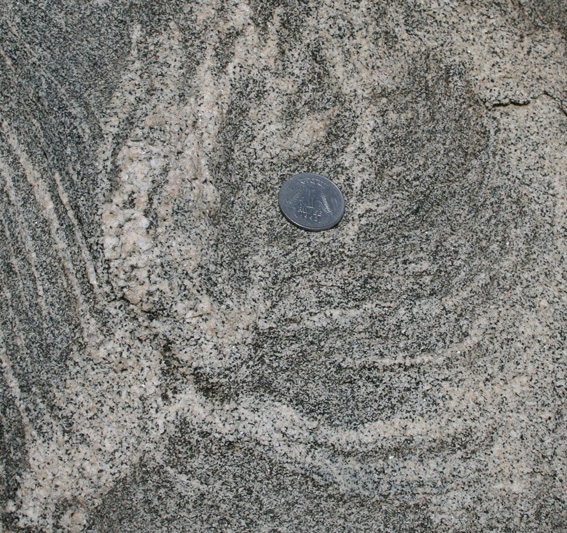
|
| Figure 2c. Detail of
upper right-hand-side of 2b, where leucosome
displays a feathery pattern. |
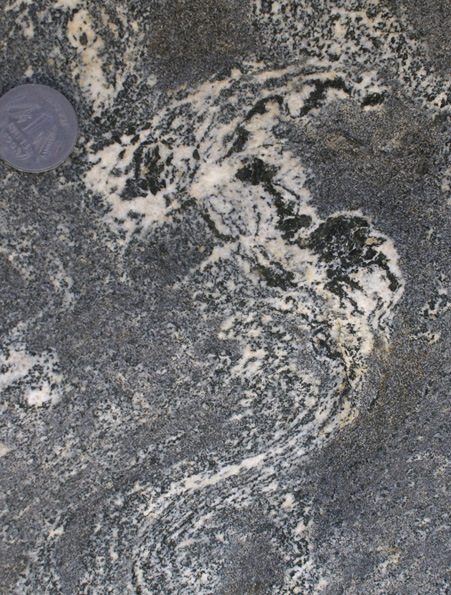
|
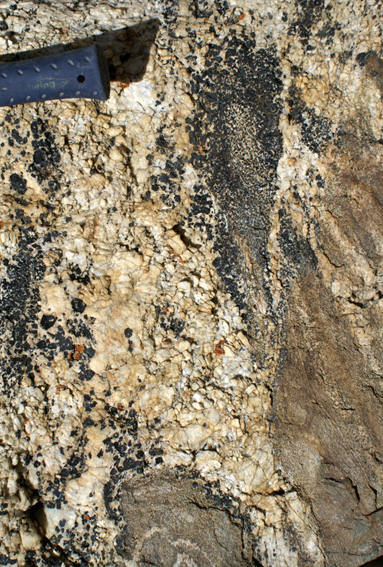
|
| Figure
3a-c. (933, 935, 915). In situ melting in amphibolite
block forming leucosome surrouding hornblende phenocrysts. (block) |
Figure
3b. Disaggregation of folded biotite-amphibolilte.
Leucosome has hornblende phenocrysts showing preference to grow on
isolated amphibolite block (upper right). (block) |
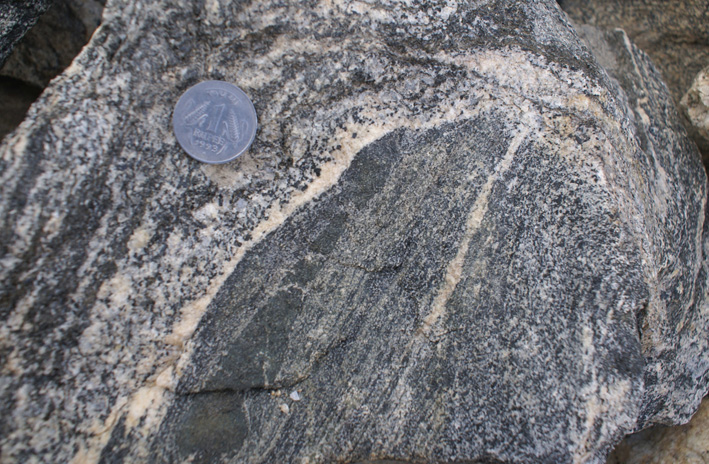
|
| Figure
3c. Partly preserved block of biotite-amphibolite surrounded by
a narrow rim of leucosome and a hornblende diatexite. Note that the
block itself has leucocratic patches, better developed on the
right-hand side where its boundary with the surrounding is diffuse and
internal leucosomes link up with the external groundmass. (block) |
b)
Amphibolite break-up: diatexite
formation
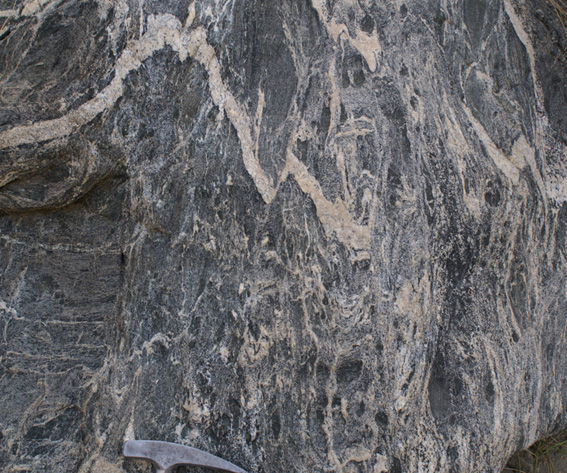 |
| Figure
4 (925-926): This block of
amphibolite shows three stages of break
up due to melting and melt migration. On the left-hand-side a metric
block of amphibolite has an original foliation (horizontal in the
photograph) and few leucosomes. The central part shows an increase in
leucosome fraction and the partial disruption of the amphibolite. On
the right-hand-side the original
amphibolite is disrupted to form a diatexite. This evolution from left
to right is traced by the leucocratic dyke in the upper part of the
photograph, which evolves from relatively straight, on the left, to
folded in the centre and disrupted on the right, and reappears in the
far right again. |
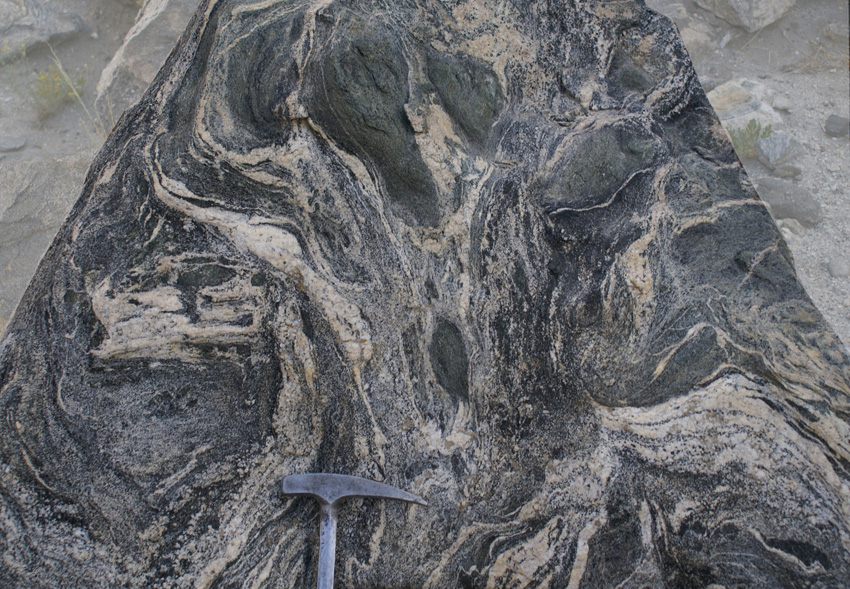
|
| Figure 5. Leuco or mesocratic irregular bands pervading the rock and
isolating blocks of amphibolite. Note diffuse boundaries everywhere.
Interpretation: melt channelway disaggregating the source rock and
mobilizing magma: (block surface slightly curved, photo at a high angle
to the leucocratic bands but due to variation in strike and block
curvature there is some cut effect). |
c)
Folding and axial planar leucosomes
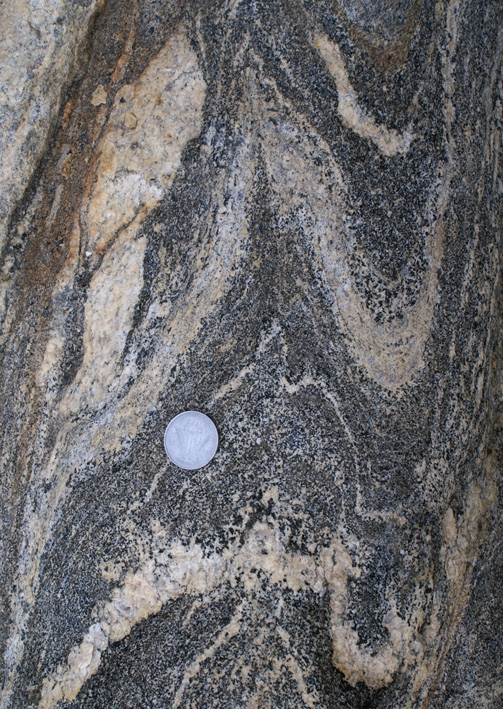
|
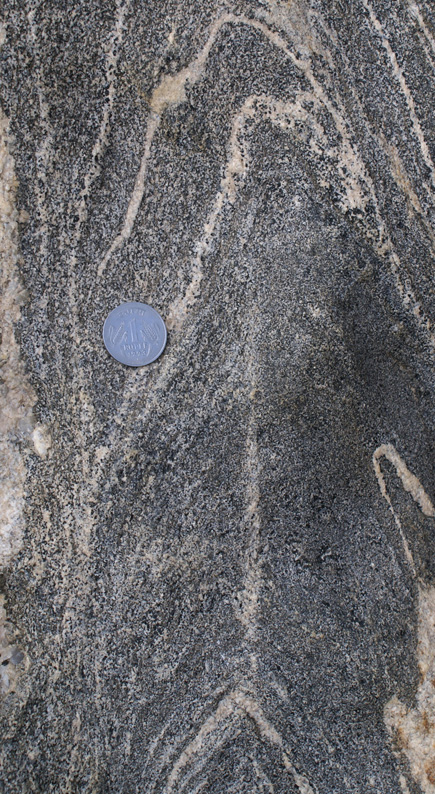
|
| Figure
6. (885good). In situ melting in amphibolite during
folding (outcrop) |
Figure
6b (888zoom). Escape channelway of melt along the axial plane
inferred from the narrow diffuse leucosome through the hinge zone.
(outcrop) |
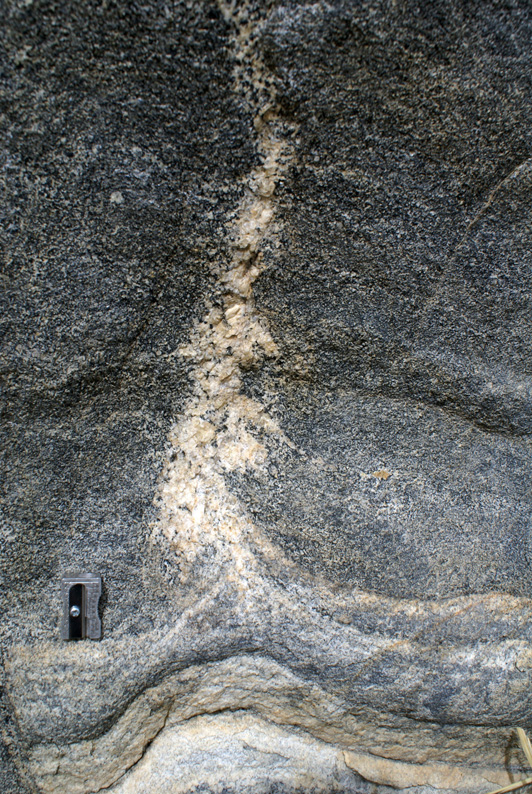
|
| Figure 6c (1216).
Incipient folding triggering axial planar leucosome
accumulation. |
d)
Final product of melting
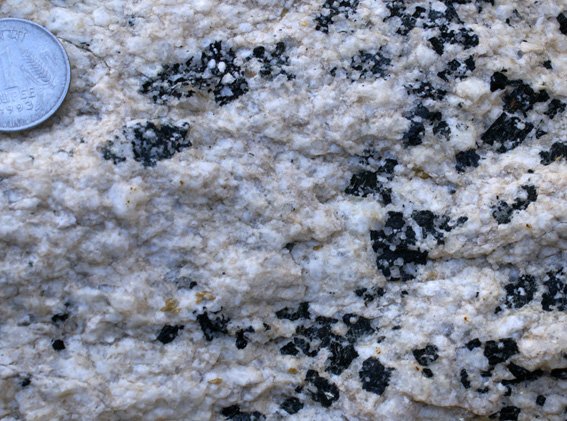
|
| Figure
7. Typical melting product
of amphibolites:: leucocratic rock with poikilitic porphyroblasts of
hornblende (inclusions generally quartz). This fabric was used
elsewhere in the region to recognize partial melting in
deformed
rocks. |
e)
Examples elsewhere along the
Pangong Range
Shyok - Lomo Yogma, 20 km SE of Agham
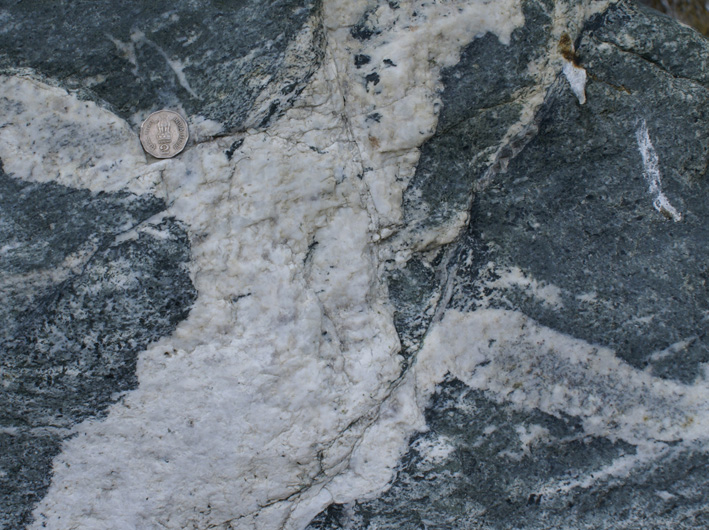
|
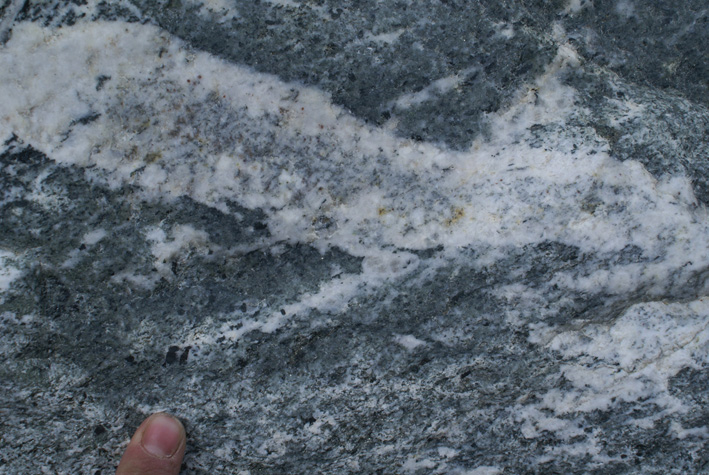
|
| Figure
8a,b,c. Lomo Yogma valley.
Leucogranite dykes with hornblende phenocrysts (upper, central part).
Dykes have irregular boundaries with intermediate biotite amphibolite
(see zoon in b). |
Figure 8b. Detail of
lower right-hand-side of b, showing continuity of
leucogranite dykes down to groundmass scale, and the gorwht of a
porphyroblast in the matrix, immediately above the finger. |
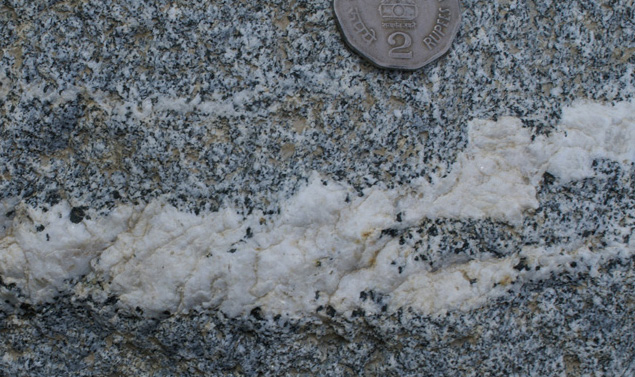
|
| Figure 8c.
Leucograntie with irregular boundaries against
intermediate biotite-amphibolite, and containing hornblende
porphyroblasts preferentially close to the margin. |
Shyok - Darbuk Gorge

|
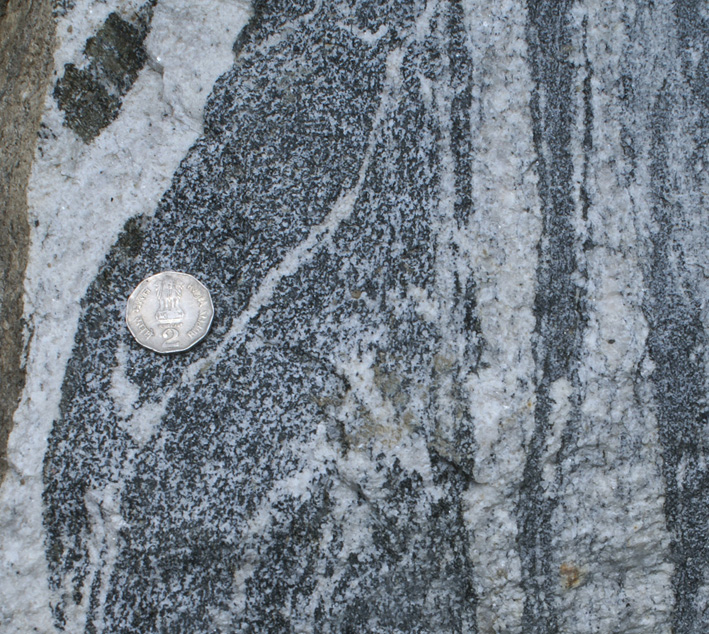
|
| Figure
9. Diatexite in
Bt-Hbl-bearing gneiss, presumably related to water-present melting with
production of peritectic hornblende (Fig. 9b). Length is 3m. |
Figure 9b. Same outcrop
as 9a. In situ melting (center of photograph)
giving rise to a leucogranite and porphyroblasts of euhedral,
>2cm
Hbl (upper left-hand-side). |
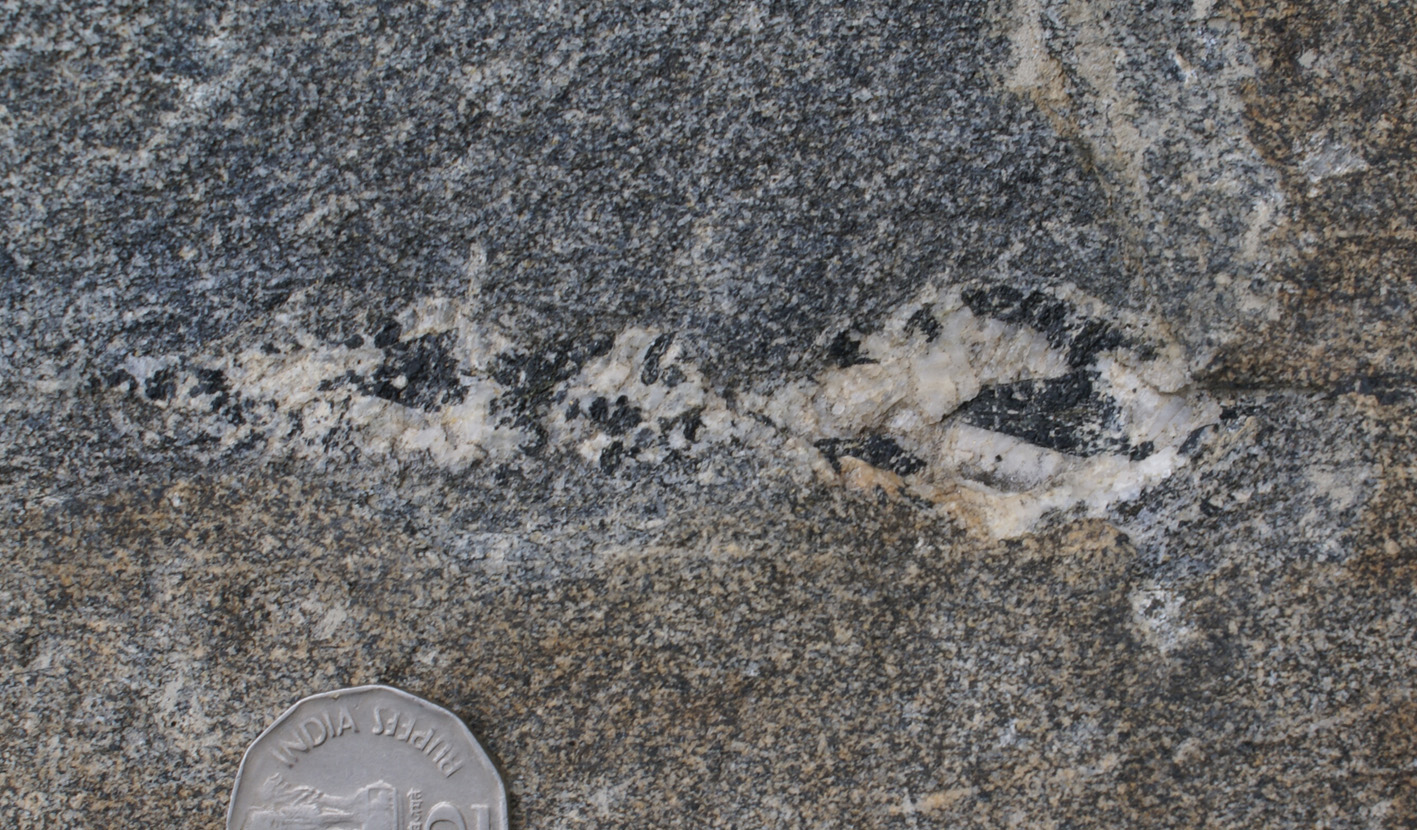
|
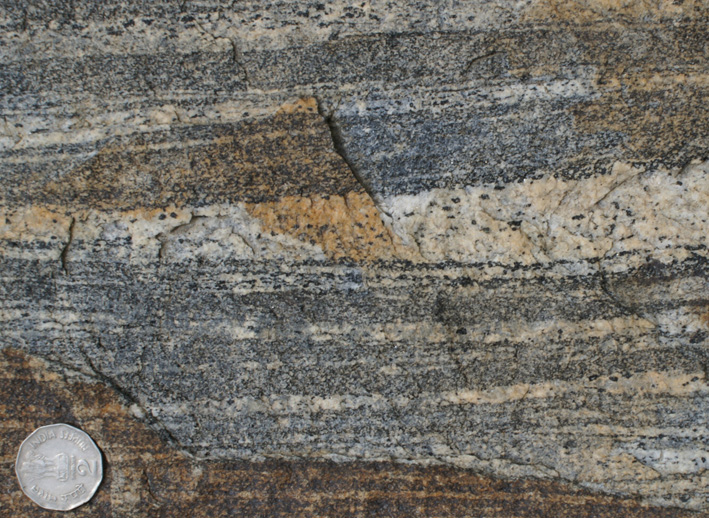
|
| Figure
9c.Same outrcrop as b,c,
showing leucogranitic material surrounding poikiloblatic Hbl. |
Figure 9d. Typical
banding comprised of mafic Bt-Hbl gneisses and
leucocratic bands with porphyroblasts of Hbl. |
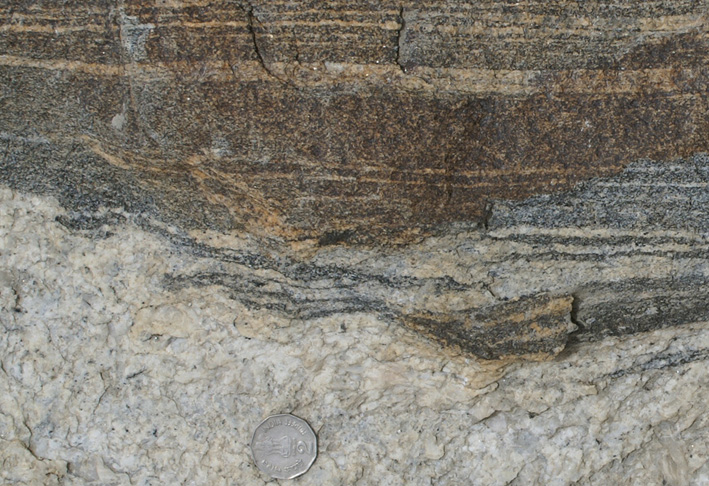
|
| Figure 9e. Continuous
merging between layer parallel leucocratic bands
and cross-cutting leucogranite with rare mafic
grains. |







